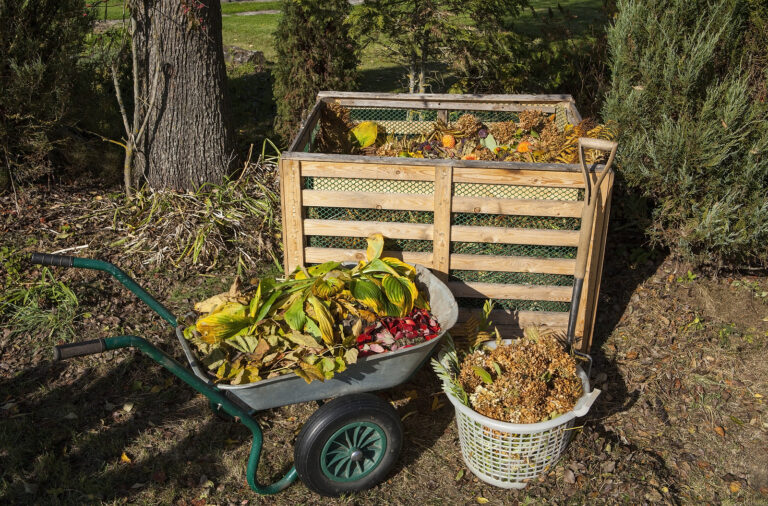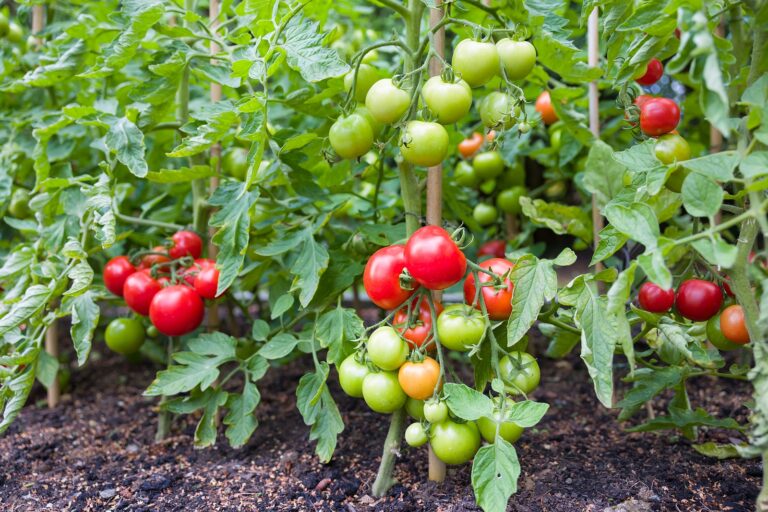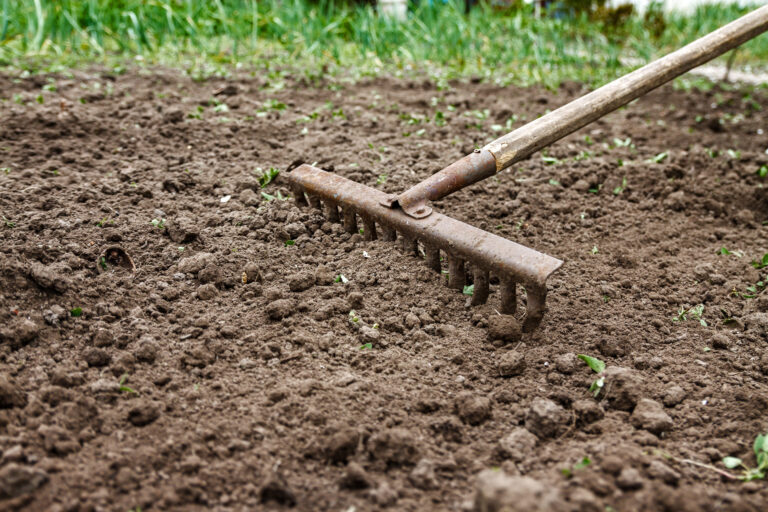How to Build Living Soil: A Step-by-Step Guide
Reawakening the life beneath your feet for thriving, resilient gardens
Introduction: Why Living Soil Matters
Healthy plants begin with healthy soil — and healthy soil is alive. Beneath every garden lies a hidden ecosystem of microbes, fungi, insects, and organic matter working together to feed plants, store carbon, and filter water.
Building living soil means cultivating this underground community instead of disrupting it. Unlike conventional gardening, which treats soil as a passive medium for holding roots, regenerative gardeners see soil as a living organism — one that needs food, air, shelter, and protection.
This guide will walk you through how to turn tired, lifeless dirt into a thriving living soil system step-by-step.
What Is Living Soil?
Living soil is rich in organic matter, teeming with microorganisms, and structured to hold air and moisture. It cycles nutrients naturally without the need for synthetic fertilizers.
At its heart is the soil food web, a complex network that includes:
- Bacteria and fungi that break down organic matter and exchange nutrients with plant roots.
- Protozoa and nematodes that feed on microbes, releasing nutrients in plant-available forms.
- Earthworms and arthropods that aerate the soil and create humus.
When this community is in balance, plants grow stronger, resist disease, and require fewer external inputs.
Step 1: Observe and Test Your Soil
Before you begin building, get to know your soil.
Observe Texture and Structure
Take a handful of soil, moisten it, and roll it between your fingers:
- Sandy soil feels gritty and drains quickly.
- Clay soil feels sticky and holds water.
- Loam — the ideal — feels soft and crumbly, holding shape but breaking easily.
Do a Simple Soil Life Check
Dig a 6-inch hole. Do you see worms, insects, or white fungal threads? These are signs of living soil.
Optional: Soil Testing
Send a sample to a local lab or use a home test kit to measure pH and nutrient levels. This helps guide your amendments and compost choices.
Step 2: Feed the Soil, Not the Plants
Conventional gardening often focuses on feeding plants directly with fertilizers. In regenerative gardening, the goal is to feed the soil food web.
Organic Matter Is the Key
Organic matter is the foundation of living soil. It provides food for microbes, improves structure, and increases water retention.
Add:
- Compost: Finished compost introduces beneficial organisms and nutrients.
- Aged Manure: Adds nitrogen and microbial life.
- Leaf Mold: Decayed leaves create humus and fungal-rich material.
- Kitchen Scraps (pre-composted): Adds carbon and micronutrients when composted.
Work organic matter into the top few inches of soil or apply it as a thick mulch.
Step 3: Protect and Cover the Soil
Bare soil is vulnerable — it loses moisture, erodes easily, and bakes in the sun. Living soil thrives under a protective blanket.
Use Mulch
Cover soil with 2–4 inches of organic mulch such as:
- Straw or shredded leaves
- Wood chips or bark
- Grass clippings (in thin layers)
- Compost mulch (compost spread as a topdressing)
Mulch prevents compaction, regulates temperature, and feeds soil organisms as it breaks down.
Use Living Covers
In fall or between crops, plant cover crops like clover, vetch, rye, or buckwheat. Their roots hold soil in place, prevent nutrient leaching, and add biomass when turned under or cut down.
Step 4: Minimize Disturbance
Tilling and digging break up the soil structure, kill microbes, and expose organic carbon to oxidation. To build living soil, disturb it as little as possible.
Try These No-Till Methods
- Broadforking: Gently loosen soil without inverting layers.
- Topdressing: Add compost and organic matter to the surface and let worms pull it down.
- Sheet mulching: Layer cardboard, compost, and mulch to smother weeds and start a new bed.
Each season, your soil will grow richer and more alive as structure and biology rebuild naturally.
Step 5: Encourage Fungal Networks
Fungi form the communication and nutrient highways of the soil. Mycorrhizal fungi connect plant roots, helping them access water and minerals far beyond their root zone.
How to Support Fungi
- Avoid chemical fertilizers and fungicides.
- Add wood chips or leaf litter to feed fungi.
- Use mycorrhizal inoculant when planting perennials or trees.
- Keep soil consistently moist but not waterlogged.
Healthy fungal networks lead to resilient soil ecosystems and nutrient-dense crops.
Step 6: Add Compost and Biology Regularly
Adding biology keeps your soil food web active.
Compost Tea or Extract
Brew compost tea (aerated mixture of compost, water, and a small amount of molasses) and apply it as a soil drench or foliar spray. This boosts microbial diversity and improves plant health.
Vermicompost
Use worm castings in seedling mixes or as a topdressing around established plants. Worms concentrate nutrients in plant-available forms.
Fermented Plant Extracts
Homemade natural fertilizers — like nettle tea or comfrey tea — add trace minerals and microbial life.
Step 7: Keep Living Roots Year-Round
Living roots feed the soil even when crops aren’t growing. Root exudates — sugars released into the soil — feed bacteria and fungi.
How to Keep Roots in the Ground
- Grow cover crops in winter or between harvests.
- Plant perennials and self-sowing annuals.
- Interplant quick crops (like radishes) with slower ones (like tomatoes) to ensure continuous living roots.
Soil life goes dormant when there are no roots to feed it. Keep the underground pantry full year-round.
Step 8: Water Wisely
Living soil holds water better, but it still needs thoughtful management.
Water Practices That Support Soil Life
- Drip irrigation: Delivers water directly to roots without compacting soil.
- Mulching: Reduces evaporation dramatically.
- Deep, infrequent watering: Encourages deep root growth.
- Avoid overwatering: Too much moisture drives out oxygen and suffocates microbes.
Over time, as organic matter increases, your soil will act like a sponge, retaining more water naturally.
Step 9: Encourage Soil Life with Diversity
Diverse gardens feed diverse microbes. Monocultures starve the soil food web.
Strategies for Diversity
- Rotate crops each season to prevent depletion.
- Plant guilds or polycultures — combinations of plants that benefit each other.
- Include native plants to support beneficial insects and soil organisms.
- Avoid chemical herbicides and pesticides that harm microbial life.
Every new species in your garden adds a layer of complexity to the soil ecosystem.
Step 10: Let Nature Lead
Regenerative gardeners are observers first and managers second. Living soil doesn’t need constant correction — it thrives on natural cycles.
What to Watch For
- Earthworms and fungal threads appear under mulch.
- Soil becomes darker, softer, and easier to work.
- Crops grow stronger with less fertilizer.
- Weeds and pests become less problematic.
When the system starts to regulate itself, you know your soil is truly alive.
Troubleshooting Common Issues
| Problem | Likely Cause | Regenerative Solution |
| Poor drainage | Compacted or heavy clay | Add organic matter, use broadforking, avoid overwatering |
| Few earthworms | Chemical residues, dry soil | Add mulch and compost, stop chemical use |
| Fungal mats on mulch | High carbon, slow decay | Add nitrogen (green material) or turn lightly |
| Sour smell | Anaerobic conditions | Loosen soil or mulch, improve drainage |
Conclusion: The Soil Will Teach You
Building living soil is not a one-time project—it’s a relationship. Every layer of mulch, every handful of compost, and every living root you nurture deepens your connection to the life beneath your feet.
In time, your garden will transform: plants will grow stronger, pests will diminish, and the soil will become a dark, crumbly sponge of life.
You won’t just be growing plants anymore — you’ll be growing soil. And that is the true foundation of regeneration.
Key Takeaways
- Living soil is an ecosystem, not a medium.
- Feed soil with organic matter, not synthetic fertilizers.
- Keep it covered, minimally disturbed, and full of roots.
- Foster biodiversity and observe natural cycles.
- The longer you practice, the more alive your soil becomes.
Regenerative Gardening Learning Hub
🌿 Start here: The Complete Guide to Regenerative Gardening and Farming
1️⃣ Soil Health and Living Systems
- How to Build Living Soil: A Step-by-Step Guide
- Understanding the Soil Food Web: Life Beneath Our Feet
- How to Use Compost and Vermicompost in a Regenerative Garden
- Mulching for Soil Health: How to Protect and Feed the Soil Naturally
- Using Mycorrhizal Fungi to Boost Plant Health and Yield
- Minimal Tillage: Why and How to Disturb the Soil Less
- How to Test, Read, and Rebalance Your Soil Naturally
2️⃣ Biodiversity and Polyculture
- How to Design Polycultures and Companion Plantings for Regenerative Gardens
- Integrating Native Plants into Your Food Garden
- Creating Habitat for Beneficial Insects and Pollinators
- Cover Cropping for Biodiversity and Soil Regeneration
- Crop Rotation for Soil Fertility and Pest Management
3️⃣ Carbon Sequestration and Organic Matter
- Why Capturing Carbon in the Garden Is Important and Fights Climate Change
- Increasing Soil Carbon with Compost, Mulch, and Deep Roots
- Biochar: What It Is and How to Use It in the Garden
- How to Keep Soil Covered Year-Round to Build Carbon and Fertility
4️⃣ Water Stewardship
- How to Use Water Wisely: The Principles of Water-Wise Regenerative Gardening
- Building Swales and Contour Beds to Slow and Sink Rainwater
- Mulch, Groundcovers, and Soil Structure for Water Retention
- Harvesting Rainwater for Regenerative Gardens
5️⃣ Perennial Crops and Permanent Systems
- How to Transition from Annuals to Perennials in the Vegetable Garden
- Perennial Vegetables for Regenerative Systems
- Agroforestry and Food Forest Basics for Gardeners
- Integrating Fruit Trees and Shrubs into the Vegetable Garden
6️⃣ Animal Integration
- Chickens in the Garden: How to Use Them Regeneratively
- Using Worms and Bees as Regenerative Allies
- The Role of Animals in Closing the Nutrient Loop
7️⃣ Human and Community Connection
- The Ethics of Regenerative Gardening: Care for Earth, People, and Future Generations
- How to Build a Community Garden Using Regenerative Principles
- Teaching Regenerative Gardening to Children and Beginners
- Healing the Land and Ourselves: The Psychology of Regenerative Practice
8️⃣ Regenerative Design and Planning
- How to Plan a Regenerative Garden from the Ground Up
- Regenerative Gardening Principles Simplified for the Home Gardener
- Home Garden Permaculture
- How to Create a Home Food Forest
- French Intensive Gardening
- Square Foot Gardening
- Zone and Sector Planning for Small Regenerative Gardens
- Using Observation and Feedback to Improve Your System Each Season
9️⃣ Inputs and Outputs: Closing the Loop
- How to Make and Use Compost Tea and Fermented Plant Extracts
- Zero Waste Gardening: How to Cycle Nutrients and Minimize Inputs
- How to Build a Closed-Loop Garden System
10️⃣ Case Studies and Personal Experience




